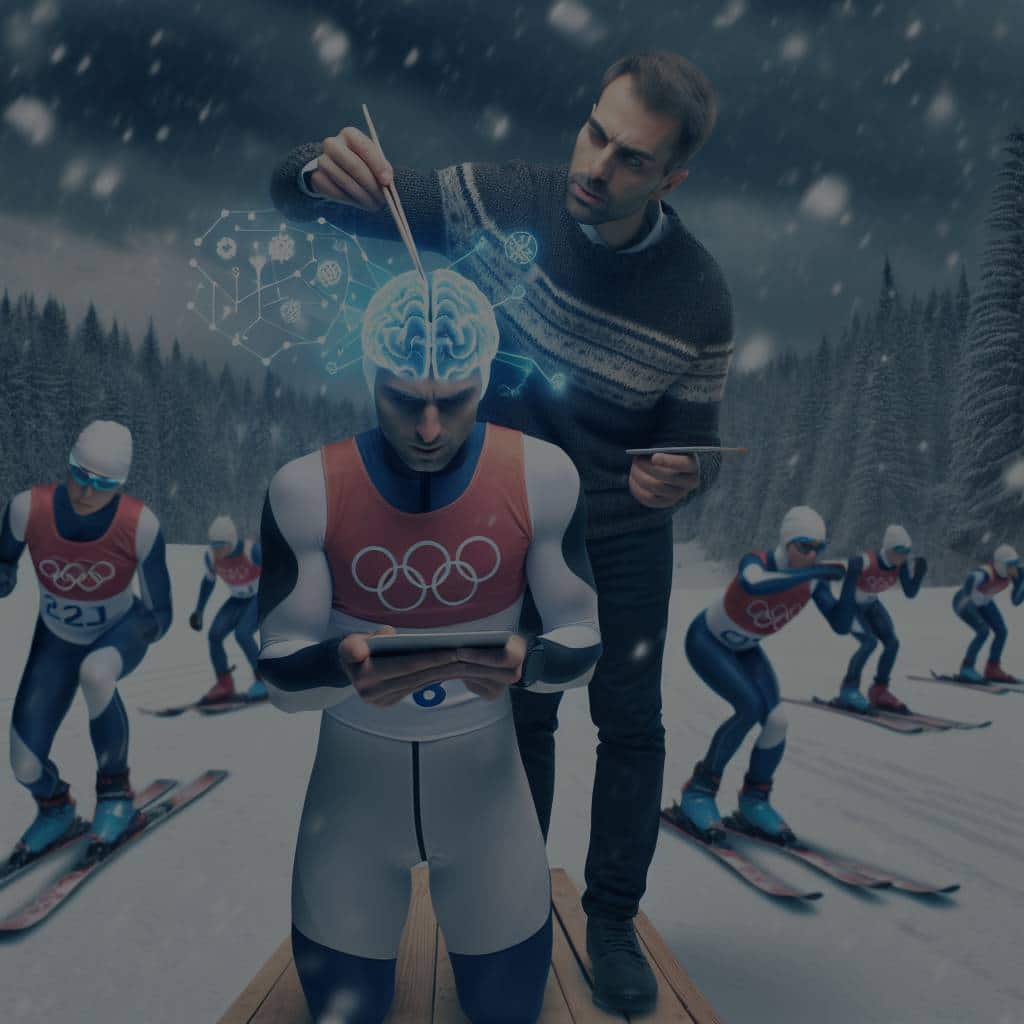The Biathlon is a winter sport that combines cross-country skiing and rifle shooting. It requires immense physical endurance and extreme precision, two polar opposite skills that make this sport uniquely challenging. The athletes, known as biathletes, must manage their energy and focus to excel in both disciplines. They need to maintain high intensity and speed on the ski track, then quickly calm themselves to take precise, steady shots at the shooting range. Thus, training in biathlon centers around enhancing these two contrasting skills. Concentration, in particular, is a crucial factor that significantly affects a biathlete’s performance.
The question is, how do Olympic coaches train biathletes to better concentrate, particularly during shooting rounds? This article explores the various techniques used by coaches to enhance concentration in biathletes, drawing on academic studies available on Google Scholar and PubMed.
Additional reading : What Specific Training Does a Biathlete Need to Switch from Sprint to Pursuit Races?
Training Regimes and Exercise Intensity
Biathlon is a sport of extremes. The high intensity skiing part demands high aerobic power, while the shooting component requires the athlete to be calm, focused, and steady. Maintaining a balance between these contrasting requirements is a significant challenge in training. Olympic coaches incorporate various techniques to help biathletes manage their heart rate and focus during the transition from skiing to shooting.
One approach is high-intensity interval training (HIIT). This form of exercise involves short, intense bursts of physical activity, followed by brief recovery periods. This mimics the biathlon’s structure, where athletes have to switch from intense skiing to the relative calm of shooting. HIIT has been found to improve both aerobic and anaerobic fitness, thereby enhancing the overall performance of biathletes.
Also to see : Is Sports Visualization More Effective Before or After Physical Training for Swimmers?
Moreover, coaches often use biofeedback training to help athletes control their physiological responses. This technique involves using monitoring devices to provide athletes with real-time feedback about their heart rate, breathing rate, and muscle tension. The idea is to help them better understand their bodies and learn to control their physiological responses, thereby improving their concentration and shooting performance.
The Importance of Rifle Sway in Shooting
Rifle sway is another critical factor that influences a biathlete’s shooting performance. It refers to the movement of the rifle caused by the athlete’s physiological responses, such as heartbeat and breathing. A high level of rifle sway makes it more difficult for the athlete to aim accurately, thereby reducing their shooting performance.
Research published on PubMed shows that Olympic coaches use various techniques to reduce rifle sway. One common method is dry firing, where athletes practice the shooting motion without actually firing bullets. This allows them to focus solely on controlling the rifle sway without worrying about hitting the target.
Furthermore, coaches also use visualization techniques to help athletes improve their shooting performance. Athletes are encouraged to visualize the process of shooting, including controlling the rifle sway, in their minds before actually performing the action. This mental rehearsal has been found to help reduce rifle sway and improve shooting accuracy.
Cross-training in Biathlon
Cross-training refers to training in disciplines other than the athlete’s primary sport. For biathletes, this could include training in sports like running or cycling to enhance their aerobic endurance, or practicing yoga or pilates to improve their body control and concentration.
Cross-training offers several benefits for biathletes. It breaks the monotony of training solely in biathlon, helping to keep athletes motivated and engaged in their training program. More importantly, cross-training can contribute to improving the athletes’ overall performance by enhancing their fitness, flexibility, and concentration.
Google Scholar research supports the effectiveness of cross-training in improving biathletes’ performance. Specifically, sports that require a high level of concentration, such as archery or golf, can help biathletes improve their focus during shooting.
The Role of Technology in Enhancing Concentration
Technology plays a significant role in modern sports training, and biathlon is no exception. In particular, technology can be used to enhance concentration in biathletes.
One such technological tool is virtual reality (VR) training. Using VR, athletes can practice shooting in various simulated environments and conditions. This realistic, immersive practice can help biathletes improve their concentration and shooting accuracy, as they can train for different scenarios that they might encounter in actual competitions.
In addition, wearable technology can also aid in improving concentration. Devices such as heart rate monitors or brainwave-sensing headbands can provide real-time feedback to athletes about their physiological responses. This information can then be used to train athletes to better manage their responses, thereby improving their concentration during shooting.
Even though we haven’t delved into every aspect of how to improve concentration in biathletes, it’s clear that a combination of well-planned training, effective use of technology, and the right mental approach can make a significant difference. As the sport of biathlon continues to evolve, coaches and athletes will undoubtedly continue to innovate and find new ways to enhance concentration and overall performance.
The Science of Mental Training in Biathlon
Olympic coaches recognize that biathlon is not just a test of physical endurance, but also of mental resilience and focus. The sport demands the ability to transition smoothly from a high-intensity cross-country skiing section to a highly concentrated shooting phase, and vice versa. Hence, mental training plays a crucial role in the preparation of biathletes.
The concept of mental training incorporates techniques designed to enhance cognitive abilities such as focus, concentration, and decision-making. A popular method adopted by coaches, backed by studies on Google Scholar, is meditation. Regular meditation practice has been shown to increase attention span, improve reaction times, and enhance self-control.
Another common mental training technique is mindfulness, which involves focusing the mind on the present moment and accepting it without judgment. This is particularly valuable in biathlon, where athletes need to quickly forget any missed shots and focus on the next target. Studies available on PubMed and Google Scholar have shown that mindfulness training can improve shooting accuracy.
Lastly, Olympic coaches also use cognitive behavioral therapy (CBT) techniques to help athletes deal with performance anxiety. This therapy helps athletes to recognize and change negative thought patterns that can affect their concentration and shooting performance.
Advanced Equipment and Their Impact on Concentration
The evolution of equipment used in biathlon, specifically the rifle, has also impacted the athletes’ concentration levels. The rifle, used in the shooting segment of the sport, has seen significant advancements over the years, with the aim of minimizing body sway and maximizing shooting accuracy.
Modern biathlon rifles are lightweight, often weighing around 3.5 kilograms. They are also equipped with highly sophisticated sighting systems that help athletes aim accurately at targets located 50 meters away. The reduced weight and superior ergonomics of these rifles make them easier to handle, thereby reducing body sway and improving shooting performance.
Furthermore, the rifles are equipped with mechanisms that mitigate the effects of recoil, helping athletes maintain their focus on the target even after taking a shot. The advancements in rifle technology, combined with intense physical and mental training, contribute significantly to enhancing the concentration of biathletes.
Conclusion
Improving concentration in biathletes involves a multifaceted approach that includes rigorous physical training regimes, mental conditioning, utilization of advanced technology, and leveraging sophisticated equipment. High-Intensity Interval Training (HIIT) and cross-training play a crucial role in boosting athletes’ physical endurance, while techniques like biofeedback training, visualization, and mindfulness improve their mental resilience and focus.
Modern technology, such as virtual reality and wearable devices, provides real-time feedback and creates realistic, immersive training scenarios, further enhancing athletes’ concentration levels. Advancements in equipment, especially the biathlon rifle, also contribute to reducing body sway and improving shooting accuracy.
Despite the numerous challenges associated with the sport of biathlon, it is evident that Olympic coaches are leveraging a range of techniques and resources to optimize the performance of these elite athletes. As new research emerges and technology continues to advance, it will be exciting to see how the world of biathlon evolves and how these athletes continue to push the limits of human performance.






